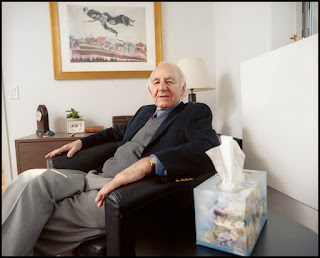Literature Review #5
Visual
CitationHurvich, M. “Classics Revisited : The Ego in Anxiety (Max Schur, 1953) and, an Addendum to Freud’s Theory of Anxiety (Charles Brenner, 1953).” Psychoanalytic Review (1963), vol. 84, no. 4, Guilford, 1997, pp. 483–521.
Summary
This source explains Sigmund Freud’s interpretation of anxiety, but I mainly focused on his theories of anxiety. His first theory suggests that anxiety is pathological and the result of extreme sexual frustration. His second theory explains that anxiety has both pathological and adaptive functions. Pathological anxiety involves a memory trace of a traumatic event and can be the result of substantial regression. This regression “leads to the loss of the distinction between past and present, resulting in the patient regressively experiencing in the present the terror he faced at an earlier time in his life” (Hurvich 488). Freud describes fear to be a response to danger whereas anxiety is a reaction to an unconscious psychic danger. While agreeing with Freud’s theory of anxiety, Max Schur states that “patients with anxiety disorders, especially some phobic persons, may be afraid to speak of traumatically induced issues. When they start talking, they may begin to re-experience the traumatic situation as a present reality” (Hurvich 490).
Author
Marvin Hurvich is a professor of psychology who has many writings consisting of theoretical, clinical, and empirical aspects of annihilation anxieties, so he is definitely knowledgeable on the topic of anxiety and the psychology behind it.
Key Terms
Anxiety: a mental health disorder that includes feelings of persistent worry and fear about everyday situations that can cause trouble in one’s daily activities.
Regression: a return to earlier stages of development and abandoned forms of gratification belonging to them, prompted by dangers or conflicts arising at one of the later stages.
Three Quotes
“The regression leads to the loss of the distinction between past and present, resulting in the patient regressively experiencing in the present the terror he faced at an earlier time in his life” (Hurvich 488).
“Additionally, the person’s capacity to make distinctions between present and potential danger, between a traumatic situation and one of present danger, reflects the growth of reality testing, impulse control, and secondary process thought” (Hurvich 489).
“This is a major reason that patients with anxiety disorders, especially some phobic persons, may be afraid to speak of traumatically induced issues. When they start talking, they may begin to re-experience the traumatic situation as a present reality” (Hurvich 490).
Value
This source is important to my research because it can be related to the déjà vu. The regression that I explained earlier is similar to déjà vu in that déjà vu can also be due to someone’s anxiety experience. After an individual experiences a certain traumatic event, they might develop persistent anxiety and believe that this certain event will occur again. This will then make the individual feel as if they are reliving this experience in their active conscious or in their dreams. Reliving the same experience may trigger that strange sensation of déjà vu and in return can generate more anxiety. The unconscious mind also holds anxiety and could be related to this as well.


Comments
Post a Comment